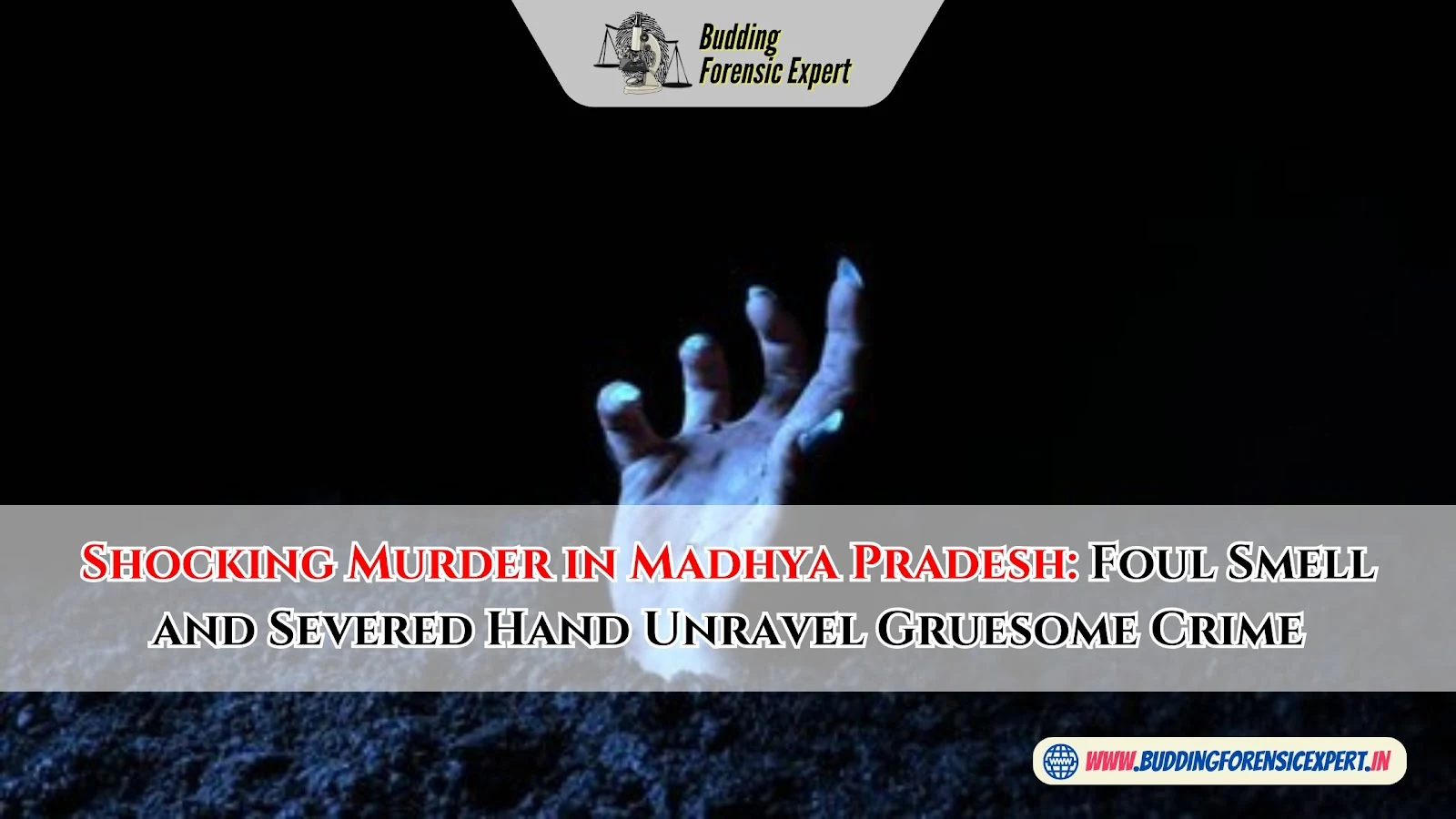Unlocking the Morena Murder: A Forensic Perspective on the Severed Hand That Spoke Volumes
The Scene of the Crime: A Forensic Goldmine
The case began when residents of a quiet Morena neighborhood reported a persistent foul odor emanating from the home of Rajesh Sharma (name changed), a reclusive middle-aged man. On April 30, 2025, neighbors broke into the locked house and were met with a shocking sight: a severed human hand lying in the living room. The Morena Police were quick to respond, and what followed was a masterclass in forensic investigation.
The crime scene itself was a treasure trove of evidence. Bloodstains on the walls, overturned furniture, and a trail leading to the backyard suggested a violent struggle. The severed hand, however, was the centerpiece. As a budding forensic expert, I can’t overstate the significance of such a find. A human hand carries a wealth of information—fingerprints, DNA, and trace evidence—that can make or break a case.
Neighbors Break In
Alerted by a foul smell, neighbors forced entry into Sharma’s home, discovering a severed hand and prompting a police investigation.
Forensic Analysis Begins
Fingerprint and DNA analysis of the hand confirmed the victim’s identity and linked the crime to a suspect.
The Severed Hand: A Forensic Rosetta Stone
The severed hand was more than a grisly relic; it was a forensic Rosetta Stone that unlocked the case. Fingerprint analysis, using automated fingerprint identification systems (AFIS), confirmed that the hand belonged to Rajesh Sharma. This ruled out any planted evidence scenarios.
Forensic pathologists noted that the severance occurred postmortem, likely with a sharp instrument. The clean cut suggested intent to dismember the body, possibly to facilitate disposal. Trace evidence under Sharma’s fingernails revealed foreign DNA, indicating a struggle and leading police to Vikas Tomar, a 32-year-old laborer.
Key Forensic Findings
The Body in the Backyard: Piecing Together the Timeline
The discovery of Sharma’s body in a shallow grave provided further clues. Autopsy reports revealed multiple stab wounds as the cause of death, with decomposition suggesting death occurred 7–10 days prior. Forensic entomology and soil analysis likely aided in establishing the timeline, though specific details remain unreported.
Investigation Highlights
Confirmed multiple stab wounds and postmortem dismemberment.
Insect activity helped estimate time of death.
The Suspect: Forensic Evidence Seals the Case
Vikas Tomar’s arrest was a direct result of forensic evidence. DNA under Sharma’s fingernails and bloodstains on a tool in Tomar’s possession sealed his fate. Despite claiming the murder was unintentional, the evidence suggested a calculated cover-up.
Vikas Tomar is in custody, facing charges of murder and tampering with evidence. The investigation continues to explore potential accomplices.
Challenges and Triumphs in Forensic Work
Decomposed bodies and outdoor crime scenes pose significant challenges, yet the Morena Police’s swift action preserved critical evidence. This case demonstrates the growing accessibility of forensic science in rural India, a triumph for justice.
A Broader Impact: Lessons for Forensic Science
The Morena case is a call to aspiring forensic scientists: embrace the meticulous and never underestimate small evidence. It also highlights the role of community vigilance in bringing crimes to light.
Sources
Dainik Bhaskar, “Morena Mein Badboo Ne Khol Diya Murder Ka Raaz,” May 1, 2025.
Amar Ujala, “MP: Ghar Se Aayi Badboo, Tala Todkar Dekha To Mili Ek Haath,” May 1, 2025.
Zee News extremity, this case will undoubtedly inspire future forensic experts to pursue the truth, no matter how hidden it may be.




